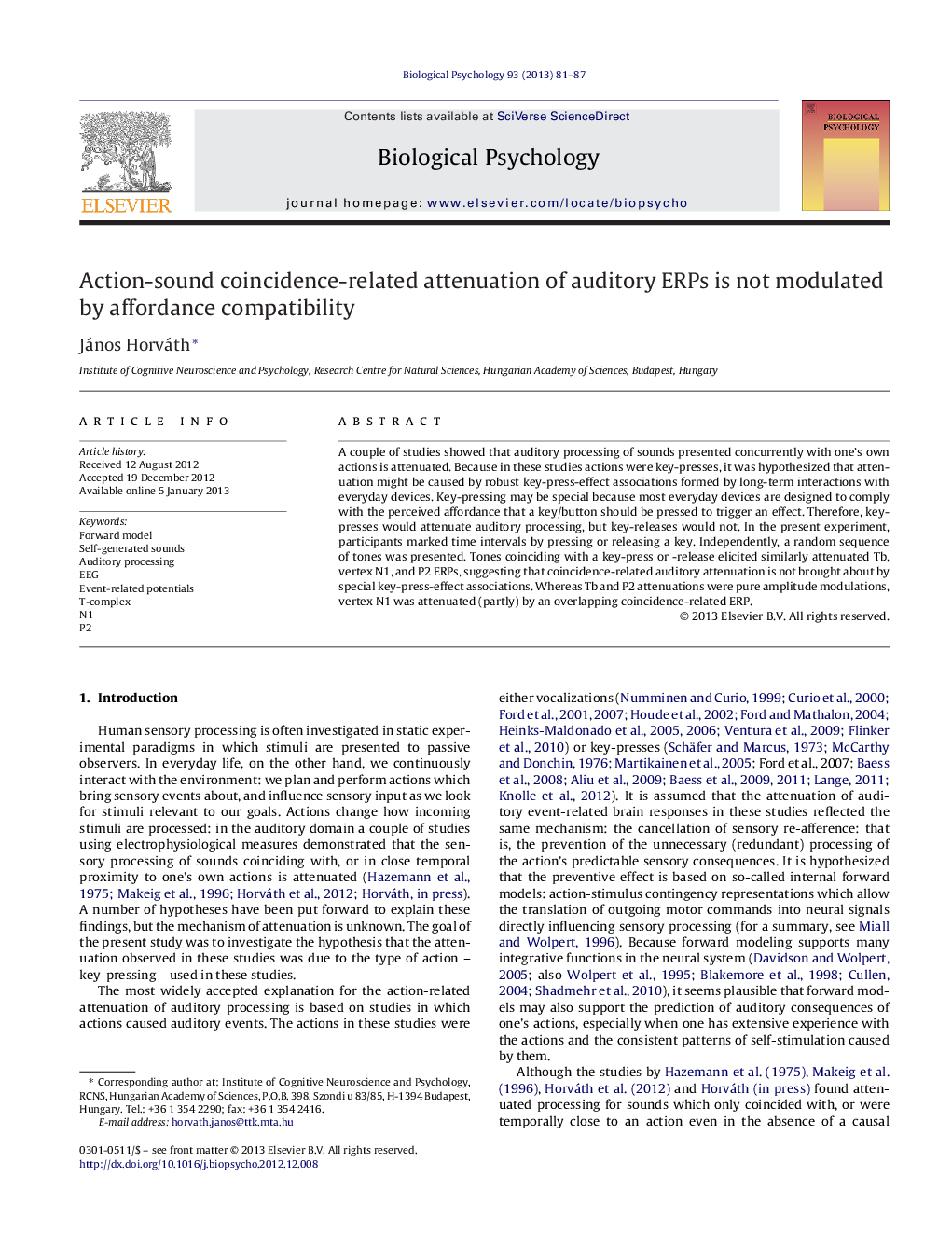| کد مقاله | کد نشریه | سال انتشار | مقاله انگلیسی | نسخه تمام متن |
|---|---|---|---|---|
| 920985 | 920744 | 2013 | 7 صفحه PDF | دانلود رایگان |

A couple of studies showed that auditory processing of sounds presented concurrently with one's own actions is attenuated. Because in these studies actions were key-presses, it was hypothesized that attenuation might be caused by robust key-press-effect associations formed by long-term interactions with everyday devices. Key-pressing may be special because most everyday devices are designed to comply with the perceived affordance that a key/button should be pressed to trigger an effect. Therefore, key-presses would attenuate auditory processing, but key-releases would not. In the present experiment, participants marked time intervals by pressing or releasing a key. Independently, a random sequence of tones was presented. Tones coinciding with a key-press or -release elicited similarly attenuated Tb, vertex N1, and P2 ERPs, suggesting that coincidence-related auditory attenuation is not brought about by special key-press-effect associations. Whereas Tb and P2 attenuations were pure amplitude modulations, vertex N1 was attenuated (partly) by an overlapping coincidence-related ERP.
► Auditory processing of sounds coinciding with one's key-presses is attenuated.
► This might be caused by robust key-press-related effect expectations.
► Recorded event-related potentials to tones coinciding with key-presses or -releases.
► Key-presses and -releases resulted in similar N1, P2, and Tb attenuations.
► The coincidence-effect is not brought about by robust key-press-related expectations.
Journal: Biological Psychology - Volume 93, Issue 1, April 2013, Pages 81–87